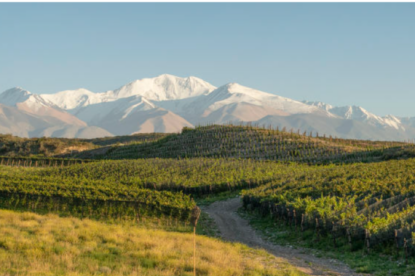Cultivated around the world, Riesling is a gifted ambassador when it comes to interpreting the terroir and tastes of the places it is grown. Its roots, however, lay in Germany, where Riesling’s first recorded mention was found in a castle cellar log dated March 13, 1435. Over a half century since Riesling’s “birthday”, Germany endures as the global benchmark for the variety.
“It’s German Riesling that sets expectations for what the variety can produce,” says Kathleen Thomas, the wine training manager for the international Hakkasan Group.
Only in Germany does Riesling produce such a dazzling kaleidoscope of wine styles. In a singular, steadfast grape, Riesling expresses the diversity of German terroir – everywhere from the jagged slate slopes of the cool-climate Mosel to the loamy, sun-drenched hills of the Pfalz. German Riesling falls anywhere from bone dry to unctuously sweet. In alcohol, it can clock a sprightly 7% abv or a surprisingly powerful 15% abv. It ranges from feather light to luscious in texture and can be produced in both still and sparkling styles. German Riesling is both fruit-forward and earth-driven and always electric.
Its diversity and versatility make it a favorite for wine lovers, particularly for sommeliers tasked with an increasingly global restaurant scene.

Marissa Copeland, wine director of Junoon, a modern Indian restaurant in New York City, appreciates German Riesling for the dexterity of texture it offers. Whether something delicate and spry, like a Riesling Sekt [sparkling wine], or something drier and fuller bodied, “I can find the weight, texture and acid I want by going to different areas and makers,” she says.
On the tasting menu at Junoon, Copeland pairs Sekt with seared hamachi dressed in a cucumber vinaigrette and gelée made from Limca, a lemon-lime soda popular in India. With a zesty fruit profile that offers “more apple on the nose than Champagne,” she explains, “Sekt is perfect for the dish.”
At Boulud Sud in Miami, Mediterranean-inspired cuisine plays well with lighter bodied, off-dry and high-acid German Rieslings, says head sommelier Daniel Chaviano. “Shrimp al ajillo,” is Chaviano’s “go-to pairing.” The delicate sweetness and bracing acidity of German Riesling helps to “mellow the garlic spice and cut through the oil.”
German Riesling boasts a superpower ability to harmonize with a panoply of flavors, especially fiery, headily spiced cuisine from regions of Asia often dismissed as incongruous with wine.
Wines with high alcohol, big tannins or prominent oak tones can amplify the burn of chili peppers. But sprightly, lower-alcohol examples of German Riesling, both dry and sweet, integrate seamlessly with spice.
For Thomas, Hakkasan’s Cantonese cuisine can be particularly tricky to pair with wine due to its profoundly layered flavor profiles. “It’s a phenomenal challenge,” she says, “when a single dish is not only spicy, but accented by so many different aromatics, herbs and flavors.”

A classic Riesling pairing at Hakkasan is the sanpei chicken claypot, a dish that melds chicken in a glaze of soy sauce, vinegar, sugar and chili. “The heat can sneak up on you,” she says, “but a lower-alcohol German Riesling with a little bit of residual sugar helps to tame the heat.”
From Nordic cooking to Korean and Japanese food traditions, the tangy, umami-rich flavors of fermentation and preservation are backbones to many global cuisines.
German Riesling pairs “extremely well with Korean flavors,” says Jhonel Faelnar, the wine director for Atomix and Atoboy, a duo of Korean-inspired restaurants in New York City. According to Faelnar, many key dishes at the two restaurants “are constructed with acidity and flavors of fermentation at the forefront. Flavors of doenjang [a fermented soy-bean paste], ganjang [soy sauce] and gochujang [a fermented red pepper paste] all bring out a savory quality in an otherwise more tropical, fruit-driven Riesling,” he remarks.
Flavors of fermentation and preservation also feature prominently at The Bachelor Farmer in Minneapolis, a restaurant that explores the seasonally driven cuisine of the North, says wine director Amy Waller. Waller uses German wines, particularly dry Riesling, to highlight unexpected nuances in even the humblest of foods, like preserved turnip greens.
Its “racy acidity and lively style” also makes German Riesling a perfect fit with the restaurant’s whole-animal butchery program, which strives to utilize all parts of animals without waste. “We do a dish with pork fat, whipped to a buttery consistency and served on toast,” she describes, “and I pair it with German Riesling almost every time.” “Its purity of fruit and bright acidity cuts through the fat and just leaves you wanting another bite, and another sip, and another bite,” Waller explains.

The perfect sip with almost any cuisine, German Riesling stands out for its inimitable verve and versatility. “German Riesling puts on the ultimate runway show,” Thomas says. “It wears a different outfit every time,” she explains, “but never loses its distinct personality.”
Last Updated: May 8, 2023














